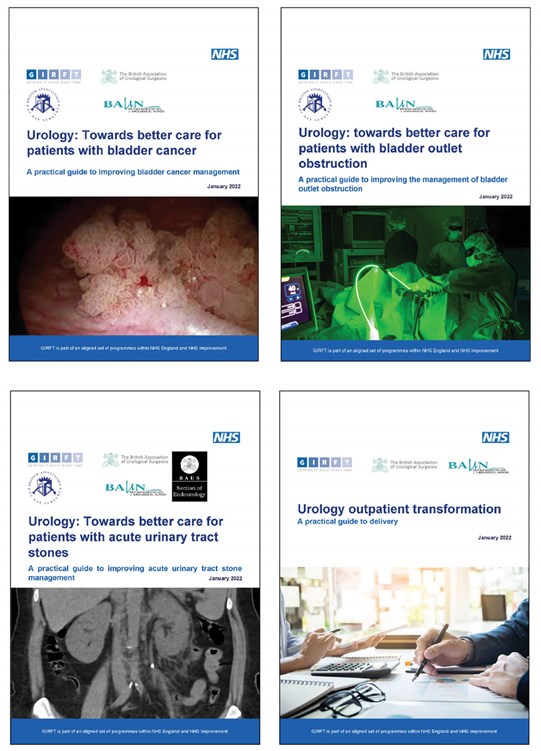Back in 2019, Simon Harrison – the then sole national lead for the urology workstream in the Getting It Right First Time (GIRFT) programme – wrote an article for Urology News on the GIRFT national report and how its recommendations could be adopted and implemented by clinical teams.
The article referred to urology as ‘a rapidly-evolving specialty’. Three years on, with the arrival and far-reaching impact of an international pandemic now informing practice, the ability of urology teams to adapt and evolve to changing circumstances has never been more apparent, or more important.
The GIRFT programme itself has adapted to the needs of an NHS experiencing unprecedented challenges: while its specialty reviews combining data analysis with clinical knowledge continue as usual, GIRFT has also evolved to become a key enabler for healthcare systems working on the High Volume Low Complexity (HVLC) programme, supporting elective recovery and the development of standardised patient pathways across regions. The HVLC programme is focusing initially on driving improvement in six high-volume specialties – ophthalmology, general surgery, orthopaedics (including spinal surgery), gynaecology, ENT and urology – engaging systems and regions to work at pace to agree standardised pathways and adopt best practice, as well as pooling capacity and resources, to deliver top decile clinical outcomes and equity of access to care for their population.
The GIRFT urology team has also changed in the intervening years. Just prior to COVID-19 hitting in February 2020, two new clinical leads had been appointed to GIRFT’s urology workstream. Kieran O’Flynn (consultant urological surgeon at Salford Royal NHS Foundation Trust) and John McGrath (consultant urologist at Royal Devon and Exeter NHS Foundation Trust) now work alongside Simon Harrison as GIRFT’s joint clinical leads for urology.
“The GIRFT urology programme’s business as usual has now re-started, with revisits to trusts underway – presenting refreshed data and looking at the progress of recommendations from the 2018 national report”
The GIRFT urology programme’s business as usual has now re-started, with revisits to trusts underway – presenting refreshed data and looking at the progress of recommendations from the 2018 national report. Almost half of the 126 urology units in England have had a revisit, allowing the GIRFT team to see first-hand the changes that have taken place as a consequence of previous recommendations, and also how changes have been accelerated by the impact of COVID-19. Changes to outpatient consulting, remote working, day-case pathways and surgical assessment of the acute patient are just some of the ways in which services have transformed. Moreover, trusts have seen significant progress in terms of networking services, facilitating greater movement of staff and offering mutual aid.
The three GIRFT leads have worked closely with the urology community to harness THE innovation and focus they have witnessed in the face of the COVID-19 pandemic. In October 2020, they published a framework document and self-assessment tool for clinicians and managers, describing the scope of work needed to build high quality and robust urology services for the COVID-19 era.
Most recently, a widespread collaboration has resulted in the issue of four important pathway guidance documents, developed over many months and with the input of more than 60 clinicians from different sub-specialties and in varying roles. The guides were developed with and fully supported by the British Association of Urological Surgeons (BAUS), British Association of Urological Nurses (BAUN), the British Association of Day Surgery (BADS) and the Greener NHS team, who all joined with the GIRFT from the earliest stages through to the final co-badging.

These delivery guides, which can be found in the GIRFT Academy Best Practice Library, set out best practice pathways alongside good practice points and case studies from NHS trusts. The aim is to enable trusts and Urology Area Networks (UANs) to deliver measurable improvements in the care of their patients.
The four guides focus on:
Bladder cancer, where ensuring timely and comprehensive provision of effective treatments can in some cases limit recurrence, halt progression and increase cure rates.
Bladder outlet obstruction, which has seen an increase in the range of treatment options, enabling more minimally invasive approaches but increasing the complexity of the decision patients must make about their choice of treatment.
Acute stones, highlighting examples of services which perform best and have overcome difficulties to improve care for patients presenting acutely with stone disease.
Outpatient transformation, which addresses the ongoing impact of the COVID-19 pandemic on outpatient services, including how the NHS can use technology to improve patient care and, by doing so, offer the bonus of a significant reduction in NHS-related carbon emissions.
The first three guides place a strong emphasis on the optimal use of ambulatory and day-case pathways, another area of pathway redesign that has become increasingly important during the pandemic. The themes arose initially from the pathways GIRFT developed as part of its urology HVLC work. The pathways set out in a concise way how patient care should be structured and delivered, but it was recognised there was much evidence and detailed discussion sitting behind the single-page pathways which would be helpful to share with urology teams across the country. As a result, further developments are now under way, such as the design of a patient decision aid for bladder outlet surgery. Future GIRFT Academy guidance will focus on the design and implementation of urology investigation units (UIU) and urology area networks.
On the back of these changes, the GIRFT team are nearing completion of a ‘10-point plan’ for the recovery of urology services in England, and the future development of the specialty. As with previous guidance documents, the plan has been developed with input and oversight from the professional associations and wider NHS. It captures the areas of practice along the patient pathway that have either undergone redesign or need further development to enable urology services to be built back in a manner that not only supports elective recovery but delivers a long-term and stable platform for urology services. The guidance includes areas such as supporting primary care, improving outpatient consulting, establishing UIUs, delivering elective care, managing acute services, supporting and developing staff, networking services, enhancing surgical training and research.
FURTHER INFORMATION
Further information is available on the GIRFT website www.gettingitrightfirsttime.co.uk
Declaration of competing interests: None declared.







